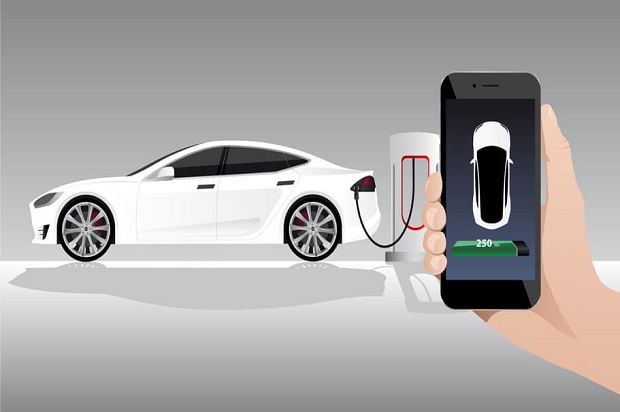Electric Vehicle Market: An In-Depth Analysis

The electric vehicle (EV) market has seen exponential growth over the past decade, driven by advancements in technology, increasing environmental awareness, and supportive government policies. This blog provides a comprehensive analysis of the EV market, focusing on market size, share, growth, key trends, major players, challenges, and future prospects.
Market Size, Share, and Growth
The global electric vehicle market has been expanding at a remarkable rate. According to recent market research, the market size reached approximately $250 billion in 2023, up from $120 billion in 2018. This growth represents a compound annual growth rate (CAGR) of around 16%, a figure that underscores the rapid adoption of EVs worldwide.
In terms of market share, China leads the global EV market, accounting for about 45% of total sales in 2023. The United States and Europe follow, with market shares of 25% and 20%, respectively. Other regions, including Japan and South Korea, also contribute significantly to the market.
The growth trajectory of the EV market is expected to continue, with forecasts predicting the market will exceed $800 billion by 2030. This growth is attributed to increasing consumer demand, improved battery technology, and enhanced charging infrastructure.
Market Trends
Several key trends are shaping the electric vehicle market:
- Technological Advancements: Innovations in battery technology, such as solid-state batteries, are enhancing the range and reducing the cost of EVs. These advancements are making EVs more accessible and practical for consumers.
- Government Policies and Incentives: Governments worldwide are implementing policies to encourage EV adoption. These include tax incentives, subsidies, and stringent emissions regulations. For example, the European Union’s Green Deal aims to have at least 30 million electric cars on the road by 2030.
- Expansion of Charging Infrastructure: The development of extensive charging networks is crucial for the widespread adoption of EVs. Companies and governments are investing heavily in this area, with fast-charging stations becoming more common.
- Automotive Industry Shift: Traditional automakers are increasingly shifting their focus to electric vehicles. Major companies like Volkswagen, General Motors, and Ford have announced ambitious plans to electrify their vehicle lineups in the coming years.
- Consumer Awareness and Preference: There is a growing awareness among consumers about the environmental impact of traditional vehicles. This awareness, coupled with a preference for sustainable products, is driving the shift towards electric vehicles.
Market Players
The electric vehicle market is highly competitive, with several key players dominating the landscape. Here are some of the major companies and their market shares:
- Tesla Inc.: Tesla remains the market leader with a significant share of around 20% in 2023. The company’s innovative approach, extensive Supercharger network, and strong brand presence continue to bolster its position.
- BYD Auto: This Chinese automaker holds approximately 15% of the global market share. BYD’s strong domestic market presence and competitive pricing have been crucial to its success.
- Volkswagen Group: With a market share of about 10%, Volkswagen is one of the leading traditional automakers making significant strides in the EV sector. The company’s ID. series has been well-received globally.
- Nissan Motor Corporation: Nissan, with its popular Leaf model, holds around 8% of the market. The company’s focus on affordability and practicality has helped it maintain a solid market position.
- General Motors: GM has a market share of approximately 7%, driven by its Chevrolet Bolt and the upcoming Hummer EV. The company is heavily investing in battery technology and EV manufacturing.
Market Challenges
Despite the rapid growth and promising future, the electric vehicle market faces several challenges:
- High Initial Costs: The upfront cost of electric vehicles is still higher compared to traditional internal combustion engine vehicles. Although this gap is narrowing due to declining battery costs, it remains a barrier for many consumers.
- Charging Infrastructure: While charging infrastructure is expanding, it is not yet ubiquitous. Range anxiety remains a concern for potential EV buyers, particularly in regions with limited charging options.
- Battery Technology: Although significant advancements have been made, battery technology still faces issues related to energy density, charging times, and lifecycle. Research and development in this area are crucial for the future of EVs.
- Supply Chain Constraints: The EV market is heavily dependent on a stable supply of raw materials, such as lithium, cobalt, and nickel. Any disruptions in the supply chain can impact production and increase costs.
- Consumer Awareness and Misconceptions: There is still a lack of understanding among consumers regarding the benefits and functionalities of EVs. Misconceptions about range, reliability, and overall cost of ownership need to be addressed through effective education and marketing strategies.
Conclusion
The electric vehicle market is poised for substantial growth, driven by technological advancements, supportive government policies, and shifting consumer preferences. Key players like Tesla, BYD, Volkswagen, Nissan, and General Motors are leading the charge, with several others making significant contributions.
However, the market is not without its challenges. High initial costs, limited charging infrastructure, battery technology hurdles, supply chain constraints, and consumer misconceptions all pose significant obstacles. Addressing these challenges requires concerted efforts from automakers, governments, and other stakeholders.
Looking ahead, the future of the electric vehicle market appears bright. Continued innovation, increased investment in infrastructure, and greater consumer awareness will likely propel the market to new heights. By 2030, electric vehicles could well become the norm rather than the exception, marking a significant shift in the automotive landscape.
For stakeholders in the market research and analysis sector, staying abreast of these developments is crucial. As the market evolves, new opportunities and challenges will emerge, requiring continuous monitoring and adaptation. The electric vehicle revolution is underway, and those who navigate its complexities successfully will be well-positioned to reap its rewards.
READ MORE: https://www.hituponviews.com/










